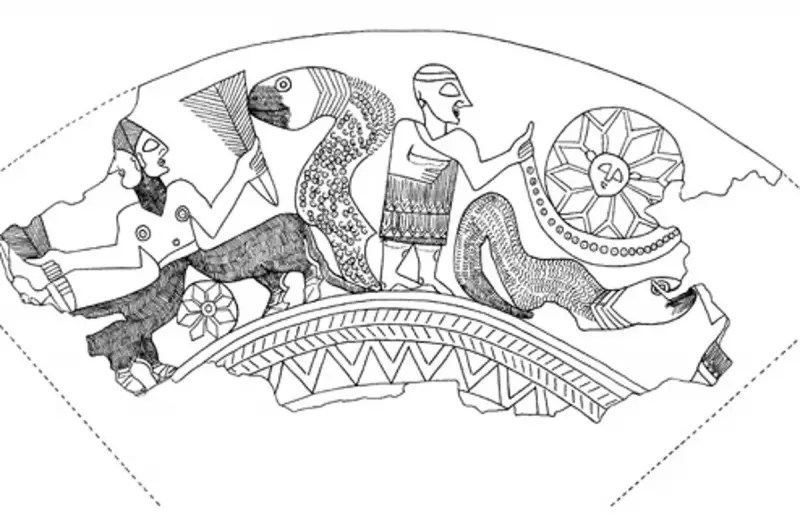
A remarkable archaeological discovery is reshaping our understanding of ancient cosmology. A 4,300-year-old silver goblet, unearthed in the Judean Hills, is believed to bear the earliest known artistic depiction of the origin of the Universe, according to a groundbreaking new study.
The Ain Samiya Goblet: A Cosmic Artefact
The iconic Ain Samiya cup was first discovered at an ancient grave site back in 1970. It was named after the Palestinian village in the Israeli-occupied West Bank near its findspot. Experts have dated the artefact to the Intermediate Bronze Age of 2650–1950BC, a period when the region was inhabited by various nomadic communities.
Standing just three inches tall, the goblet is intricately engraved with a captivating scene. The art features a chimeric half-human, half-animal figure holding plants, set alongside a celestial emblem. The design is further populated with carvings of snakes, other celestial symbols, and a mysterious motif researchers refer to as the "boat of light".
Analysis suggests the cup was likely crafted in southern Mesopotamia around 4,300 years ago. The silver used was probably sourced from either ancient Syria or from what is now modern-day Iraq, an area known for its abundant silver deposits.
Rethinking Ancient Mythology
Previous interpretations of the goblet's imagery were varied. Some archaeologists believed the contrasting elements depicted a world of chaos, ruled by a serpent, while others saw a representation of the Babylonian creation epic, the Enuma Elish, where the god Marduk defeats the chaos entity Tiamat.
However, the new study, published in the Journal of the Ancient Near Eastern Society, proposes a more profound and earlier origin for the myth depicted. The researchers argue that the goblet predates the Enuma Elish by over a millennium and is notably free from violent imagery.
Instead of a battle, the new interpretation suggests the art captures a pivotal moment of peace and creation. It illustrates the universe's transition from a pre-creation state of fusion, "when heaven and earth, animals, and plants were fused together", into a newly forged cosmic order, with the sun rising to dispel chaos and renew the world.
A Tapestry of Mesopotamian Legends
The study's authors theorise that the design is a composite, weaving together elements from different myths and legends across ancient Mesopotamia. For instance, one motif showing human figures holding up Sun mirrors bears a striking resemblance to the Celestial Boat design found on 11,500-year-old pottery from Göbekli Tepe in Turkiye.
"The scenes depict a transition from chaos to a structured universe, protected from chaotic disturbances by deities," the study states. It highlights a particular focus on the birth of a sun deity and its journey through the cosmos, a narrative that, within the context of a tomb, may have been intended to facilitate the rebirth of the soul of the deceased.
This makes the Ain Samiya goblet not merely a burial object, but a profound cosmological map, offering an unparalleled glimpse into how ancient civilisations perceived the very beginnings of order in the cosmos.





